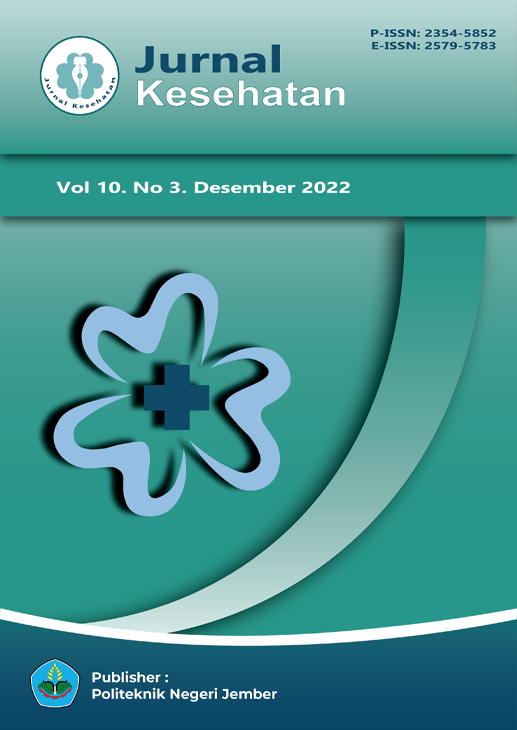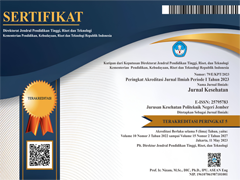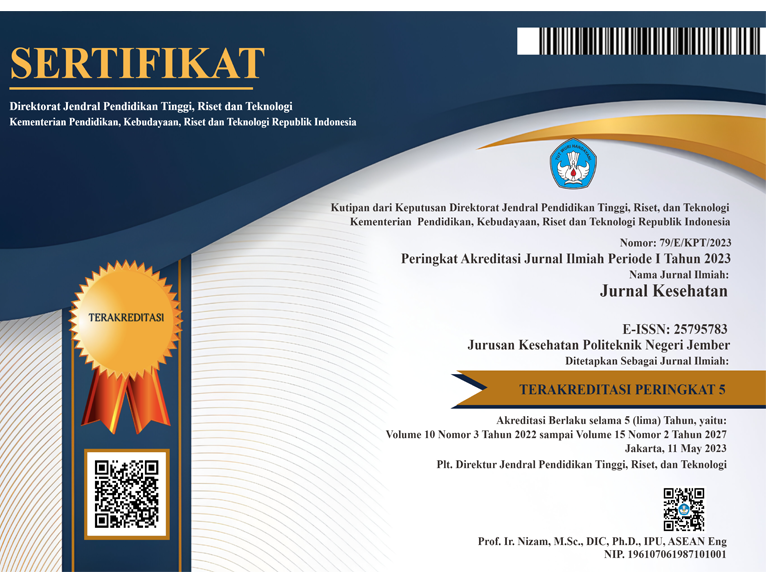Formulasi Cookies Berbahan Dasar Tepung Tempe dan Tepung Bayam Merah untuk PMT Balita
DOI:
10.25047/j-kes.v10i3.353Downloads
Abstract
Health problems, especially diet, are a problem in almost all countries. In Indonesia, the prevalence of nutrition is a serious problem and has not been fully addressed. Data from the Basic Health Survey (Riskesdas) in 2018 revealed that the prevalence of undernourished children under five was 11.4% and the prevalence of malnourished children was 3.8%. One of the efforts to increase the weight of toddlers is through the provision of supplementary food (PMT) which contains high protein and high calories. One type of PMT that meets these needs is by providing fortified cookies. Cookies with fortified tempeh flour and red spinach flour can be an alternative in giving PMT. This study aims to determine the right formulation in the manufacture of PMT Toddler cookies with the basic ingredients of tempeh flour and red spinach flour. This type of qualitative research with experimental methods. The study used a completely randomizesd design (CRD). The cookie formulation is divided into four formulations, namely F1 (control formulation), F2, F3, and F4. The treatment carried out in this study was the difference in the composition of the raw materials used and tested for the characteristics of cookies. The four formulations were tested for preference by semi-trained panelists, namely mothers who had toddlers as many as 30 panelists. The conclusion in this study was that the panelists preferred F3 cookies based on the parameters of taste, color, and texture. Cookies F3 are cookies with a substitution of 50% tempeh flour and 10% red spinach flour
License
Copyright (c) 2022 Maria Dolorosa Peni Sogen, Oktavina Permatasari, Ariani Damayanti, Maria Magdalena Meilina Rahmawati

This work is licensed under a Creative Commons Attribution-ShareAlike 4.0 International License.
Authors who publish in this journal agree to the following terms:
1. Copyright belongs to the medical journal as a publication
2. The author retains copyright and grants the journal rights to the first publication carried out simultaneously under a Creative Commons Attribution License which allows others to share the work with an acknowledgment of the author's work and initial publication in this journal.
3. Authors may enter into separate additional contractual arrangements for the non-exclusive distribution of the work (eg sending it to an institutional repository or publishing it in a book) with acknowledgment of initial publication in this journal.
4. Authors are permitted and encouraged to post work online (eg in institutional repositories or on their websites) before and during the submission process, as before and larger citations of published work (see Effects of Open Access).
Selengkapnya tentang teks sumber ini














